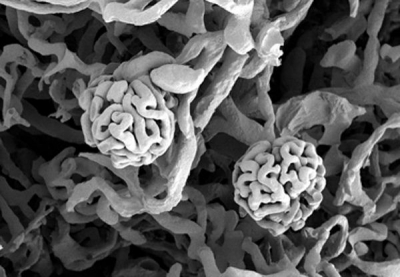
Inside the kidneys are thousands of tiny structures called glomeruli (one is called a glomerulus), working hard to filter toxic waste from the bloodstream. These tightly coiled clusters are the body’s smallest blood vessels (capillaries).
Each glomerulus works like a miniature sieve, transferring waste and excess water from the blood through the capillary wall into a renal tubule. This fluid drains away towards the bladder as urine.
The glomerulus receives its blood supply from an afferent arteriole of the renal arterial circulation. Unlike most capillary beds, the glomerular capillaries exit into efferent arterioles rather than venules. The resistance of the efferent arterioles causes sufficient hydrostatic pressure within the glomerulus to provide the force for ultrafiltration.
The glomerulus and its surrounding Bowman’s capsule constitute a renal corpuscle, the basic filtration unit of the kidney.[2] The rate at which blood is filtered through all of the glomeruli, and thus the measure of the overall kidney function, is the glomerular filtration rate.
Picture Credit : Google

